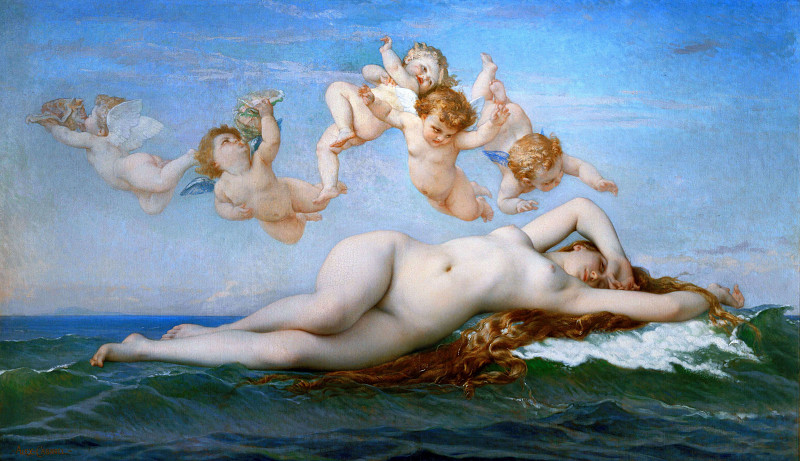The Birth of Venus Alexandre Cabanel (1823-1889)
Alexandre Cabanel – The Birth of Venus
Edit attribution
Download full size: 4853×2793 px (1,7 Mb)
Painter: Alexandre Cabanel
The artist Cabanel’s erotic work is currently in Paris at the Musée d’Orsay. The author of The Birth of Venus was one of the public’s most popular favorites, adored by the rulers. And the reason for this love of the people and the rulers was simple - he always knew the tastes of society and the public, so he could easily indulge both. So in his painting, Cabanel showed everyone what everyone wanted and what many dreamed of.
Description of Alexandre Cabanel’s painting "Birth of Venus"
The artist Cabanel’s erotic work is currently in Paris at the Musée d’Orsay. The author of The Birth of Venus was one of the public’s most popular favorites, adored by the rulers. And the reason for this love of the people and the rulers was simple - he always knew the tastes of society and the public, so he could easily indulge both.
So in his painting, Cabanel showed everyone what everyone wanted and what many dreamed of. At the time, a series of terrible revolutions were sweeping through France, and people wanted to start living the life they wanted. Many wanted to admire feminine beauty in a peaceful environment. All of this is shown in the work of Alexandre Cabanel very vividly and even defiantly.
The picture was created in 1863, however, it was not distinguished by something special and did not become a "new breath" or a stage of work for the artist. The thing is that once Cabanel chose the path and style of painting, once did not go anywhere else and did not try to do something different. All of his paintings were smooth and beguiling in their beauty and femininity.
Nevertheless, he received the Legion of Honor for this painting. The painting turned out to be very delicate. The body of the Goddess swaying gently on the waves, thus repeating their natural curves. Venus herself not only enjoys the silence and the calm, but also curves it. The artist painted her in a state of exhaustion, a half-slumber, so one gets the impression that she would be available to anyone who wanted to master her body.
And around Venus is the sea. It foams a little, but it overshadows the girl’s tranquility. It does not betray its presence, knowing that it cannot compete with this femininity and beauty. This is the beauty and tranquility that the men of the time imagined the ideal woman to be. So the author was able to understand people’s desires and display them in his painting.
Кому понравилось
Пожалуйста, подождите
На эту операцию может потребоваться несколько секунд.
Информация появится в новом окне,
если открытие новых окон не запрещено в настройках вашего браузера.
You need to login
Для работы с коллекциями – пожалуйста, войдите в аккаунт (open in new window).















COMMENTS: 1 Ответы
Непревзойденно, восхитительно
You cannot comment Why?
The subtexts of this painting are rich and varied, drawing heavily from classical mythology and Renaissance ideals. The central theme is the birth and arrival of Venus, the goddess of love, beauty, and fertility. Her emergence from the sea is symbolic of her divine origin and the dawning of these concepts into the world. The presence of the putti, often associated with love and desire, further reinforces the themes of love and beauty. The seashell on which Venus rests is a traditional symbol for female genitalia and also alludes to her birth from the sea foam. Venus herself, presented in a state of languid repose and idealized beauty, embodies the Renaissance fascination with classical art and philosophy, as well as the humanist emphasis on human form and divine perfection. The overall atmosphere of the painting is one of gentle, ethereal beauty and divine grace, celebrating the power and allure of love and aesthetic perfection.